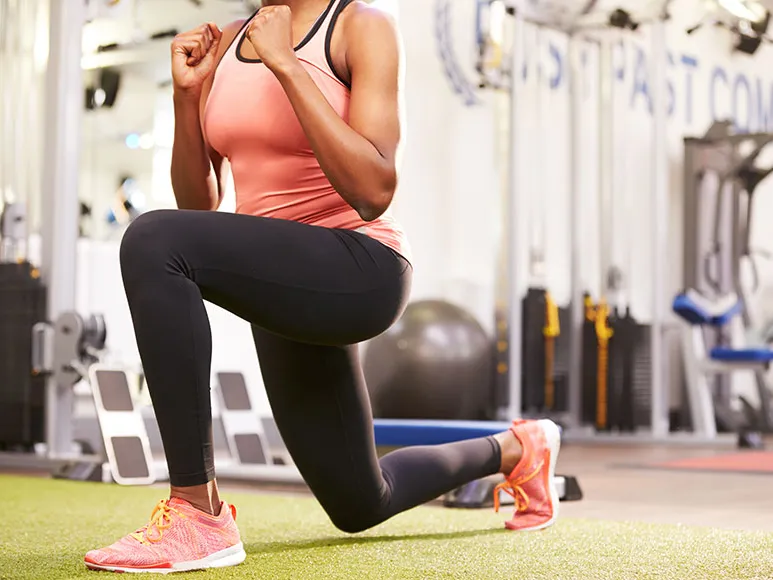Knee pain when squatting or kneeling can be debilitating, affecting your daily activities and quality of life. Whether you’re an athlete, fitness enthusiast, or someone who experiences knee discomfort during routine tasks, finding relief is essential for maintaining mobility and functionality. In this blog, we’ll explore effective strategies to address knee pain when squatting or kneeling, along with key insights from the Burlington physiotherapy experts at PhysioLinks Rehab.
What is Knee Pain?
Common Causes of Knee Pain:
Knee pain during squatting or kneeling can be attributed to various factors, including:
- Patellofemoral Pain Syndrome (PFPS): Also known as runner’s knee, PFPS occurs when the patella (kneecap) rubs against the femur, causing pain and discomfort.
- Meniscal Tears: Injuries to the meniscus, the cartilage that cushions the knee joint, can result in pain and limited mobility.
- Osteoarthritis: Degenerative changes in the knee joint can lead to pain, stiffness, and inflammation, particularly during weight-bearing activities like squatting.
- Muscle Imbalances: Weakness or tightness in the muscles surrounding the knee joint can contribute to poor biomechanics and increased stress on the knees.
Symptoms of Knee Pain in Burlington
Symptoms of knee pain may include:
- Pain or discomfort when squatting, kneeling, or bending the knees.
- Swelling, stiffness, or tenderness around the knee joint.
- Clicking, popping, or locking sensations during movement.
- Difficulty bearing weight on the affected knee.
Effective Strategies to Address Knee Pain When Squatting or Kneeling
1. Proper Warm-Up and Stretching
Before engaging in squatting or kneeling activities, it’s essential to warm up the muscles and joints to improve circulation and flexibility. Incorporate dynamic stretches and mobility exercises to prepare the knees and surrounding muscles for movement.
2. Focus on Proper Technique
Ensure proper alignment and form when squatting or kneeling to minimize stress on the knees. Keep your knees aligned with your toes, and distribute your weight evenly between both legs. Engage the core muscles and avoid rounding the back to maintain stability and support.
3. Gradual Progression and Modification
If you’re experiencing knee pain, consider modifying your squatting or kneeling activities to reduce strain on the knees. Use supportive props, such as knee pads or cushions, to alleviate pressure and discomfort. Gradually increase the depth and intensity of your squats or kneeling positions as your knee strength and stability improve.
4. Strength and Stability Exercises
Incorporate strength and stability exercises targeting the muscles around the knees, including the quadriceps, hamstrings, and glutes. Focus on exercises such as lunges, leg presses, and clamshells to improve muscle balance and joint support.
5. Cross-Training and Low-Impact Activities
Incorporate cross-training activities and low-impact exercises into your routine to reduce the load on your knees while maintaining cardiovascular fitness. Swimming, cycling, and elliptical training are excellent alternatives to high-impact exercises that can aggravate knee pain.

FAQ: Addressing Common Questions About Knee Pain in Burlington
How do I stop my knees from hurting when I kneel?
To alleviate knee pain when kneeling, try using supportive knee pads or cushions to reduce pressure on the knees. Additionally, avoid kneeling on hard surfaces for extended periods and practice proper kneeling techniques to minimize strain on the knee joints.
Should I stop squatting if my knees hurt?
If you’re experiencing knee pain during squatting, it’s essential to assess your technique and address any underlying issues contributing to the pain. Consider modifying your squatting technique, incorporating proper warm-up and cool-down routines, and consulting with a physiotherapist for personalized recommendations.
How do I know if I tore my meniscus?
Symptoms of a meniscal tear may include pain, swelling, stiffness, and locking sensations in the knee joint. If you suspect a meniscal tear, seek evaluation from a healthcare professional for an accurate diagnosis and appropriate treatment options.
What are the worst exercises for bad knees?
Exercises that place excessive stress on the knees, such as deep squats, lunges with heavy weights, and high-impact activities like running and jumping, may exacerbate knee pain and discomfort. Consider avoiding these exercises or modifying them to reduce strain on the knees.
Why Choose PhysioLinks Rehab for Knee Pain Relief?
At PhysioLinks Rehab, our experienced team specializes in diagnosing and treating knee pain using evidence-based techniques and personalized care plans. From manual therapy and targeted exercises to innovative modalities, we’re dedicated to helping you achieve optimal knee health and function. With our comprehensive approach to knee pain management, you can regain mobility, reduce pain, and get back to doing the activities you love.
See Our Experts for Knee Pain When Squatting or Kneeling Today!
Don’t let knee pain from squatting or kneeling limit your ability to function comfortably. By implementing proper techniques, incorporating strengthening exercises, and seeking guidance from healthcare professionals, you can address knee pain effectively and improve your overall knee health. With the expert care and support available at PhysioLinks Rehab, relief from knee pain is within reach. See our previous blog for more information on how to better your health today!